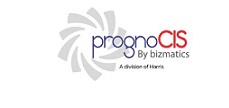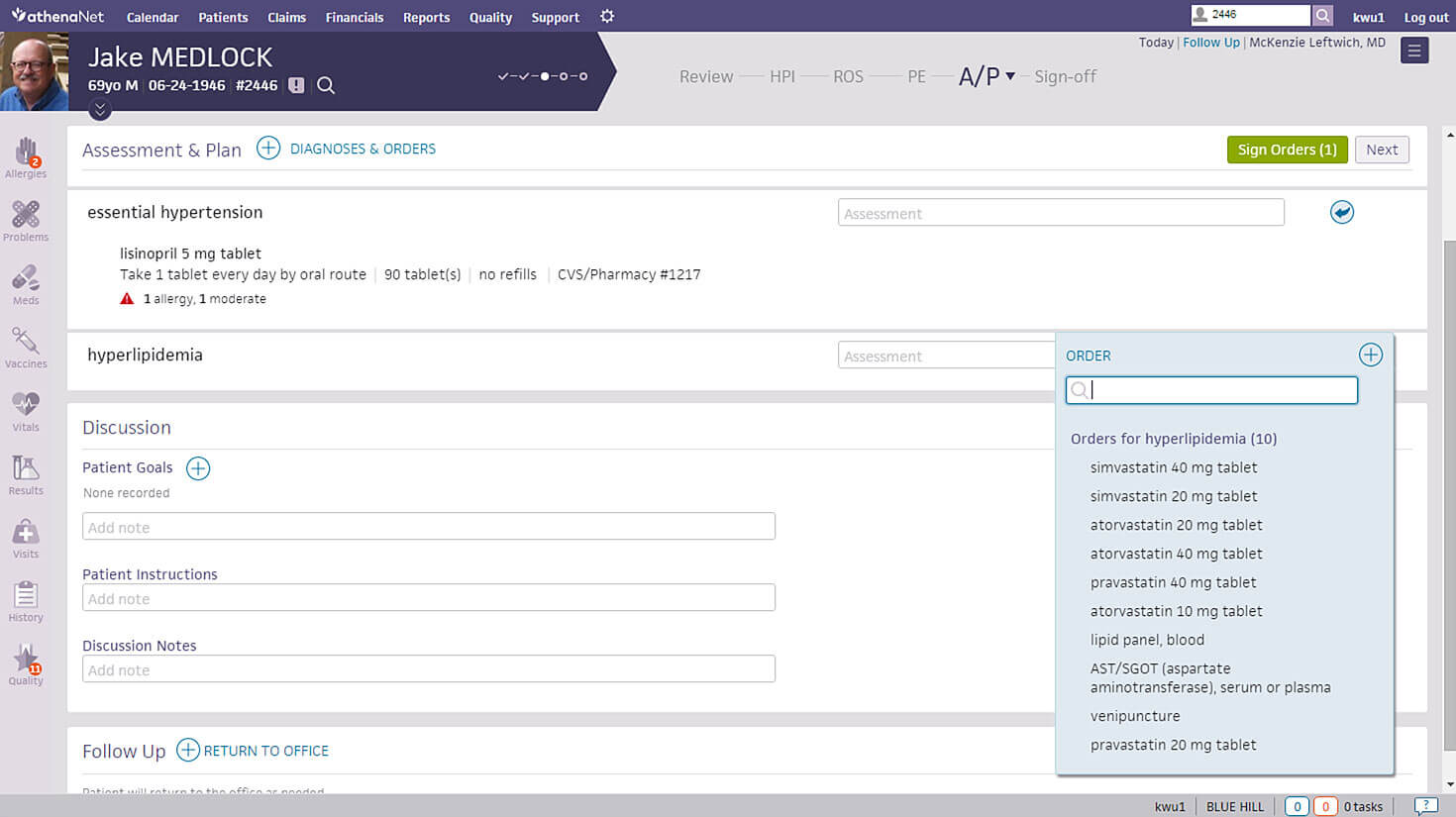The Geriatric Practice involves providing supreme care for the elderly in a long-term, hospice, or home setting. A software solution designed to assist and support long-term or post-acute care for senior patients is called the geriatric EMR software system.
Geriatric EMR solutions are best suitable for rehab clinics, senior-assisted living centers, and skilled nursing settings. The software solution provides a set of robust tools and features that includes Electronic Medical Health Records, Practice Management (PM) solutions, and e-prescribing. The software fits the specific and unique needs of the geriatric specialty to enhance data collection, billing, and scheduling procedures.
The following features make part of good geriatric EMR software. These solutions assist and support geriatric care professions by providing complete Practice Management (PM) functionality.
What is an Electronic Health Records (EHR) Software?
Looking for Electronic Medical Records Software (EMR Software) is a time-consuming project. With over 600 EMR/EHR and Practice Management Software to choose from, there are many things to consider when using or switching your Electronic Medical Records Software (EMR Software). You must make sure that you have covered every aspect involved before making a final decision. The term EMR Software or EHR Software (Electronic Medical Records) merely represents maintaining medical records for patients electronically or using a computer system. Specially designed software enables physicians and other medical professionals to store extensive sets of patient data ranging from patient demographics to detailed clinical information, such as medical history, social history, lab reports, and more.
EMR Software by Specialty
Since all medical providers (MDs, DOs, PAs, NPs, LCSW, OT, etc.) work distinctly based on their background and medical specialty, EMR Software or EHR Software must accommodate the unique style and documentation requirements. Examples of such specialty-specific features include the ability to annotate images or the capability to store before/after photos for Pain Management specialists and Dermatology specialists respectively. Similarly, other specialties such as Pediatrics, Oncology, Podiatry, Ophthalmology, Neurology, Nephrology, Dialysis Centers, Rheumatology, and Chiropractic Care require their unique set of specialty-specific features to simplify adoption.
Meaningful-Use
Since the introduction of the HITECH Act, healthcare IT has undergone a massive transition starting from the widely recognized Meaningful Use program to what is now known as MACRA, the Medicare EHR Incentive Program. The Meaningful Use program has transformed and now formed part of the four components of the new Merit-Based Incentive Payment System (MIPS), which itself is a fundamental part of MACRA.
For some medical practices, the transition from paper-based records to EMR Software (Electronic Medical Records Software) has not been a simple one. Regardless, realizing that the benefits of utilizing ONC Certified EMR Software far outweigh the hassle and challenges associated with it – ensuring a viable future, most practices today have successfully transformed their clinical and administrative operations to EMR Software.
EHR Software Benefits
Aside from ensuring tangible financial incentives and profitability, practices converting to EMR / EHR Software have seen the following benefits:
- Improved Practice Efficiency
- Improved Profitability and Revenue Cycle (Medical Billing Services)
- Patient Engagement(via Patient Portal)
- Decreased Stationary Costs
- Better Care Coordination
- Enhanced Security and Safety (Cloud Storage & Back-ups) – Cloud-based EMR Software
- Connectivity between doctors & hospitals across the country – Health Information Exchange (EMRs with HIE connectivity)
EHR Software Based on Practice Size
Not all EMR Software vendors are suitable for hospitals and/or clinics with multiple specialties or providers. Similarly, EMR Software vendors designed for larger organizations such as hospitals or multi-provider clinics do not usually support a solo doctor practice and/or a small medical enterprise. Budgetary constraints aside, many other factors will make an EMR Software vendor viable for your medical practice. From solo-provider clinics to large multi-provider and multi-specialty clinics, every practice has unique inherent challenges that must be addressed by their respective Electronic Medical Records (EMR) Software vendor.
Small or Solo Provider Practices
A small doctor’s office not only has a limited number of staff members but their EMR Software budgets are also extremely low compared to a large enterprise such as a hospital. Due to these budgetary constraints, many providers simply choose to employ Free EMR Software or choose an affordable EHR Software vendor with a low fixed monthly fee. Cloud-based access is one such important requirement so that these providers can access patient charts even from home when needed.
Large practices
Larger group practices generally comprise more than fifteen or often twenty medical providers. These practices usually provide medical services that fall under various medical specialties (Orthopedics, Pain Management, Surgery, Chiropractic Medicine, Family Medicine, etc.). Therefore, these practices require support for multiple users to access the system simultaneously, as well as for the Scheduling software to accommodate multiple locations, providers, and resources such as Dialysis Chairs, procedure room allocation, etc. These practices also keep replacing or adding staff members and need a scalable solution.
Medium-Sized Practices
These practices usually consist of 5 to 10 medical providers often belonging to the same medical specialty. Their requirements are more stringent, and their budget is also considerably large. Aside from specialty-focused requirements (EMR Software by Specialty), these practices also require unique features such as interoperability, dedicated customer support, multi-device support as well as extensive reporting functionality to keep an eye on the overall performance of the practice.
Hospitals or enterprise organizations
EHR companies such as Epic, Cerner, AllScripts, NextGen, Athenahealth, IMS by Meditab, eClinicalWorks, Meditech, McKesson, MEDHOST, etc. usually target and provide solutions for larger corporations like Hospitals, ACOs, PCMH, IPAs, CINs (Clinically Integrated Networks), Public Health Departments, etc.
These customers have the most elaborate list of requirements, which are usually documented in the form of an RFI or RFP to assess and shortlist vendors that can meet them. The requirements consist of features like inventory management modules, interface with local labs (LIS), machines, and diagnostic equipment along with drug dispensing (Pharmacy Management Software) and Electronic Medication Administration Record (EMAR), etc. These entities also require the EHR Software to integrate with multiple other software and medical devices.
Why does your practice need EMR Software?
Since the introduction of Meaningful Use, most healthcare practices simply have little or no choice but to convert their practice operations to an EHR system. However, most providers today select the EHR vendor of their choice that best suits their specific needs and must perform an extensive search to evaluate all available options before they find one that is suitable. Most potential EMR Software buyers in the market today have the following in common:
- Do not know what they are looking for
- Know exactly what they want but don’t know where to start or find it
- Relying on advice from colleagues using EMR software already
Although #3 is ideal, every provider and their practice workflow are unique and therefore what works for one provider may not suit the other. “One size fits all” simply doesn’t apply in the world of healthcare IT. Software experts and industry specialists are an ideal source of information, advice and ultimately ensure that the right decision is made.
Market Trends to Be Aware Of
Like anything else, the EMR industry is also subject to changes. From new technology to legalities and governing bodies, everything is constantly changing. Here are some of the changes I think it would do well for you to keep track of.
Cloud-Based Services
Recent research found that only 25% of practitioners are interested in a web-based model and only 50% are willing to have it as an initial model that eventually transitions to cloud-based. Cloud-based EMR software cuts down on steep upfront costs for client servers and can be hosted on any device that has a web browser. It’s no surprise that more and more vendors are transitioning to Cloud-based Software because the industry demands are changing. The move to the public cloud for healthcare is vital in the current changing landscape. For practices that don’t adopt new cloud services, the old inferior feature set coupled with the higher prices will hinder the business dramatically. This gulf between the old software and the new cloud-based software will only grow more exponentially as time goes on.
In 2025, the demand for EMR software solutions for healthcare practices has continued to rise, with market growth estimated at around 6-7% year-over-year as healthcare providers increasingly prioritize digital transformation and interoperability. This increase is largely driven by the adoption of advanced technologies like AI and cloud computing within these systems, which enhance clinical workflows and patient care. Epic Systems has expanded its dominance, now capturing over 35% of the market, particularly among large multispecialty organizations. Meanwhile, Oracle Health (formerly Cerner) has faced challenges, especially in retaining smaller hospitals, contributing to a slight decline in its market share. Together, major players like Epic, Oracle Health, Meditech and Allscripts account for a significant portion of the EHR market, reflecting the ongoing evolution and consolidation within the industry.
Widespread Interoperability
Electronic Medical Records don’t offer patients the ability to access their own records across multiple healthcare organizations due to the lack of data-sharing standards set between different practices. This causes significant problems for patients who receive care from multiple different centers. The issue also makes the diagnosis of patients harder for physicians and healthcare providers. Due to this, EMR/EHR providers are updating their software to include interoperability and integration features to allow data to be shared between these different organizations.
Latest Updates in EHR Software
Get Ready for the New Generation of EMR Software
Advancements in the fields of Artificial Intelligence and Analytics have induced a boom in the Healthcare IT industry. EMR Systems and Practice Management Software are becoming highly optimized and increasingly robust giving birth to a newer generation of EMR Software. Don Woodlock in HealthcareITNews claims that the benefits of this new generation include reduced costs, improved flexibility, and customization of EHR Software.
Physician Burnout: A Global Problem
Adam C. Uzialko in Business.com talks about how Electronic Medical Records (EMR) Software help reduce healthcare burnout. Burnouts are becoming more and more common in the healthcare industry and are becoming a great concern. Medical Software such as EMR Software and Practice Management Software allows optimized workflow and reduces the stress and feeling that cause burnout. Healthcare IT Software like telemedicine EMR Software also helps in reducing work stress and improving physicians’ work efficiency.
NYC consolidates its EHR systems onto one Epic platform
Epic EHR Software rolled out a new H2O system (Health + Hospitals Online) in Brooklyn at one hospital and 10 community health centers including NYC Health + Hospitals and neighborhood uniting 40,000+ users and 70+ patent care facilities on a single platform. EMR Software features decision support tools, Revenue Cycle features, and Patient Portal.












